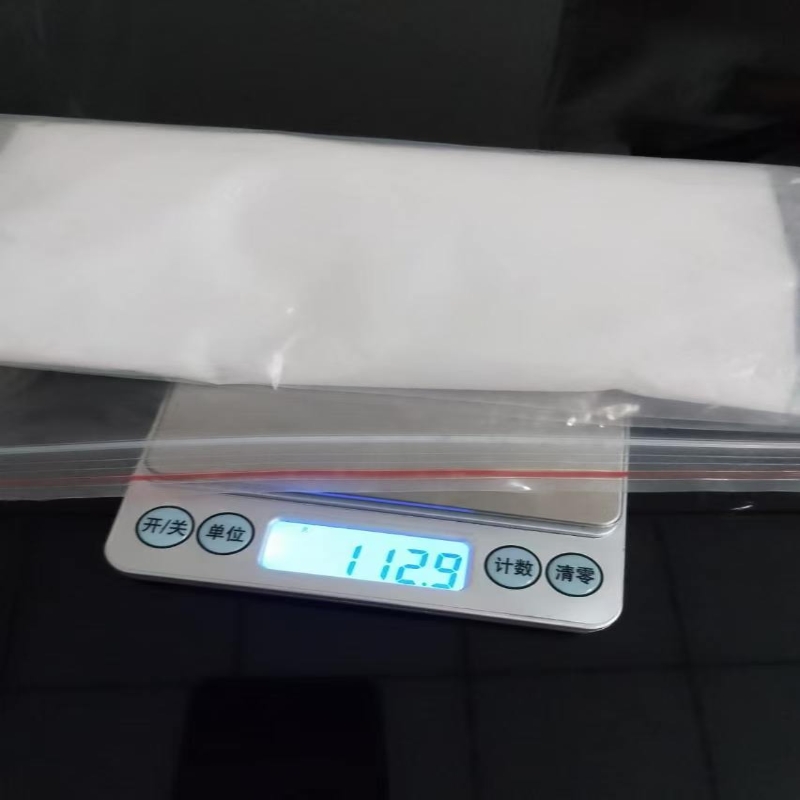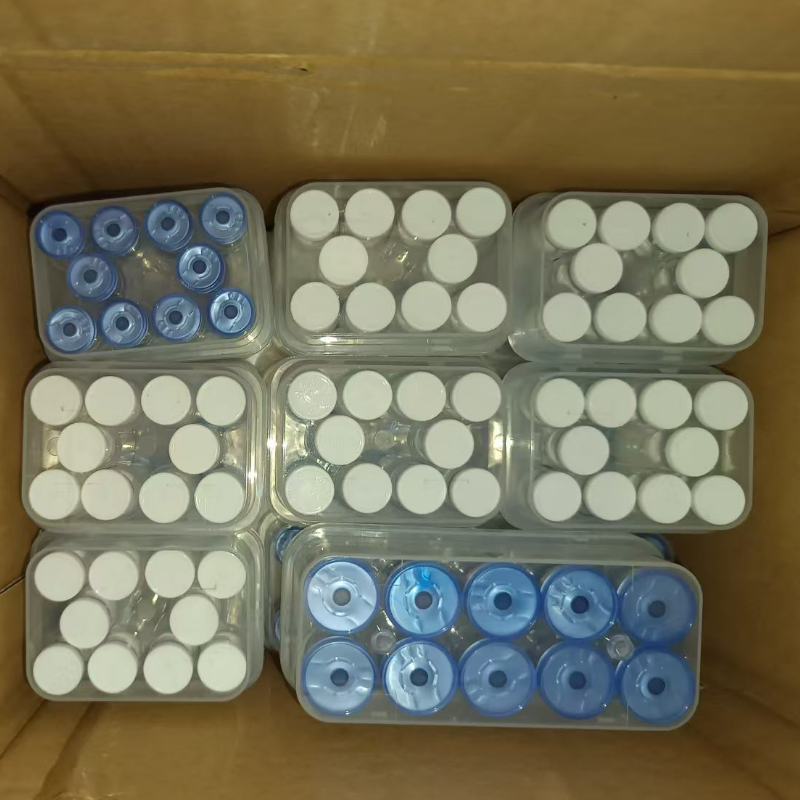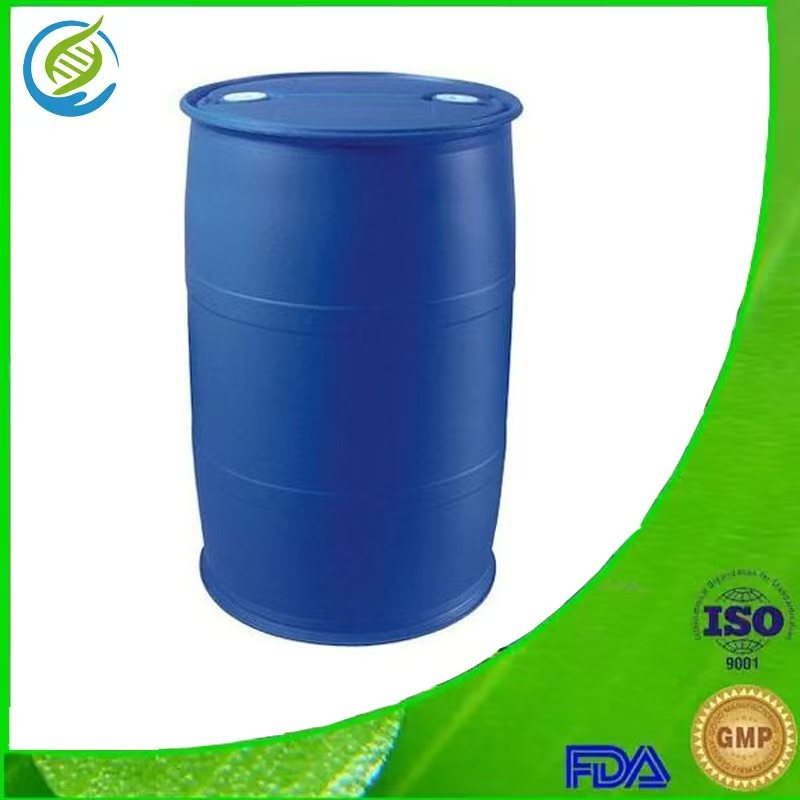-
Categories
-
Pharmaceutical Intermediates
-
Active Pharmaceutical Ingredients
-
Food Additives
- Industrial Coatings
- Agrochemicals
- Dyes and Pigments
- Surfactant
- Flavors and Fragrances
- Chemical Reagents
- Catalyst and Auxiliary
- Natural Products
- Inorganic Chemistry
-
Organic Chemistry
-
Biochemical Engineering
- Analytical Chemistry
-
Cosmetic Ingredient
- Water Treatment Chemical
-
Pharmaceutical Intermediates
Promotion
ECHEMI Mall
Wholesale
Weekly Price
Exhibition
News
-
Trade Service
For colorectal cancer (CRC), liquid biopsy strategies have great potential
in the diagnosis and prediction of efficacy due to the large amount of circulating tumor debris (cells, DNA, methylation markers, etc.
).
According to the inspiration and guidance of these research results, ctDNA technology has become an important biomarker technology in the clinical management of CRC patients, which can be used to detect minimal residual lesions (MRD), monitor early recurrence, analyze patient molecular profiles and predict treatment efficacy
.
RECENTLY, THE JOURNAL OF CLINICAL ONCOLOGY (IF:50.
717) PUBLISHED A REVIEW [1], WHICH SUMMARIZED
THE APPLICATION STATUS AND FUTURE PROSPECTS OF CTDNA TECHNOLOGY IN CRC.
Background
Liquid biopsy is not a new term, as early as 1869, Ashworth described the concept of circulating tumor cells (CTCs) and pointed out that CTCs can detach from tumors and enter the bloodstream [2].
After more than a century of development, the concept of liquid biopsy has become clearer and more widely used, especially in recent years, the information about CTC and ctDNA is growing exponentially
, especially ctDNA.
ctDNA technology vs.
tissue biopsy
As the gold standard for molecular profiling of solid tumors, tissue biopsy plays an indispensable
role in the diagnosis and treatment of tumors.
However, the inherent limitations of tissue biopsy limit this application, and ctDNA technology avoids these limitations to some extent, including the following:
Tissue sampling
Due to the choice of sampling site and pathological differences in tumors (e.
g.
, mucinous tumors), tumor tissue may not be readily available for tissue biopsy sampling, which increases the failure rate
of tissue-based next-generation sequencing (NGS).
Detection cycle
Liquid biopsy is faster and has a shorter detection cycle, taking only 7-10 days compared to the weeks of NGS
.
Means of sampling
Tissue biopsy sampling is more invasive than liquid biopsy, and in some patients, due to surgical complications and other factors, tissue biopsy sampling is not feasible [3], and the more convenient sampling method of liquid biopsy makes this strategy more suitable for continuous evaluation
of patients.
Intratumoral heterogeneity and temporal heterogeneity
Due to the problem of sampling site and detection time, tissue biopsy cannot avoid intratumor heterogeneity and temporal heterogeneity [4], which have attracted increasing attention due to their association with drug resistance [5].
Clinical application
As shown in Figure 1, ctDNA technology can be mainly used in clinical practice in the fields of MRD monitoring, efficacy prediction in metastatic CRC, detection of
acquired drug resistance, and guidance on treatment re-challenge.
Fig.
1 Clinical application of ctDNA technology in CRC
MRD monitoring
In CRC, MRD can refer to minimal, molecular, or measurable residual lesions, but it means ctDNA
that can be detected after radical surgery.
ctDNA has become a powerful biomarker for predicting a patient's risk of recurrence, with a short half-life ranging from minutes to hours, providing more accurate and real-time feedback on disease status [6].
Several studies suggest that disease relapse
is common in MRD-positive patients without therapeutic intervention.
In addition, MRD can be used as an indicator of persistent disease, and 95 to 100 percent of patients with persistent postoperative ctDNA and no therapeutic intervention will experience disease recurrence within two years of follow-up [7-9].
Recent studies have shown that MRD also offers the possibility of reducing the intensity of treatment in low-risk patients, that is, MRD-negative patients may not receive postoperative adjuvant therapy [10-13], a strategy that is currently being evaluated
in several clinical trials.
For patients undergoing radical surgery, the timing of ctDNA testing is important
.
Because surgery interferes with baseline DNA levels, diluting ctDNA and reducing test sensitivity, ctDNA testing is recommended at least two to four weeks after surgery and repeated testing in patients with undetected ctDNA within the first four weeks of surgery to avoid false negatives [14,15].
。 In addition, effective adjuvant therapy can rapidly reduce ctDNA levels, so ideally MRD should be evaluated prior to the start of adjuvant chemotherapy and at least 2 to 4 weeks after completion of adjuvant therapy to achieve continuous disease monitoring
.
In the field of early monitoring of CRC recurrence, ctDNA is also gradually recognized
.
According to existing NCCN guidelines, recurrence monitoring of CRC relies mainly on clinical history and examination, carcinoembryonic antigen (CEA) testing, imaging, and colonoscopy
.
Among them, CEA, as an important tumor marker, has a limited sensitivity, only about 70% [9], so it is imperative to find better recurrence prediction markers
.
CTDNA has been shown to predict recurrence of CRC up to 8.
7 months before imaging determines recurrence, and longitudinal ctDNA monitoring has also had higher sensitivity
in predicting tumor recurrence.
The investigators note that in patients who are positive for ctDNA but show no signs of disease recurrence on routine cross-sectional imaging, different forms of imaging can be considered for occult recurrence
.
Prediction of efficacy in metastatic CRC
In the prediction of efficacy of metastatic CRC, the long half-life and poor sensitivity and specificity greatly limit the role of tumor markers, and imaging is usually more common
in this field.
However, ctDNA is becoming a powerful adjunct to this area, with some studies showing a correlation between ctDNA levels and tumor burden and superior to conventional tumor markers in predicting treatment response [16-18].
As with chemotherapy and/or targeted therapies, another potential clinical application of ctDNA is to identify patients
who do not respond to immunotherapy.
The KEYNOTE-177 study showed that immunotherapy can prolong progression-free survival (PFS) in patients with highly microsatellite instability (MSI-H) type CRC, but about 30% of patients still do not respond to immunotherapy, and the use of ctDNA to identify patients who do not respond to immunotherapy early in the treatment can improve the prognosis
of patients who do not respond to immunotherapy as early as possible.
This application was evaluated in the prospective Phase II clinical trial INSPIRE, which included 94 patients treated with pembrolizumab, covering a total of 25 solid tumors
.
The researchers performed continuous ctDNA evaluations of patients and found that an increase in tumor volume and accompanied by elevated ctDNA levels was observed in 42 percent of patients, and the accuracy of non-response prediction was 100 percent [19].
Acquired resistance testing and treatment re-challenge
Intratumoral heterogeneity is a great challenge to the accuracy of single-lesion biopsy, and because acquired resistance can occur in different lesions in patients, it is extremely difficult
to determine whether a patient has developed acquired resistance through repeated tumor biopsy techniques.
ctDNA provides a more accurate map
of resistance mechanisms by noninvasively identifying emerging variants and tracking tumor development.
This strategy has been affirmed
in the re-challenging application of anti-EGFR therapy.
Existing studies have shown that acquired resistance during anti-EGFR therapy gradually decreases as targeted therapy is discontinued, a phenomenon known as clonal decay
.
THIS WAS EVALUATED IN THE CHRONOS TRIAL [20] AND CRICKET TRIAL [21] AND SHOWED THAT THE ANTI-EGFR RE-CHALLENGE ACHIEVED AN OBJECTIVE RESPONSE RATE (ORR)
OF 30% AND 21%, RESPECTIVELY, FOR PATIENTS WITH CLONAL DECAY ASSESSED BY CTDNA.
Limitations and future prospects of ctDNA
Although ctDNA has received increasing attention and recognition, tissue biopsy is currently the gold standard
for molecular profiling of solid tumors.
First, from a technical point of view, tissue biopsy is more sensitive in detecting driver genes such as gene fusion, because of the large
fragments of this gene rearrangement.
Although ctDNA can be used to detect copy number variations, this use is limited to patients with large copy number amplification, and even then, insufficient ctDNA cannot be detected in approximately 15 percent of patients with metastatic tumors depending on tumor type and burden [22].
Secondly, from a clinical point of view, due to the existence of the blood-brain barrier and the blood-peritoneal barrier, the application of blood-based ctDNA detection in CRC patients with brain metastases or peritoneal metastases is also relatively limited, and the strategy of ctDNA detection in other body fluids such as cerebrospinal fluid, ascites, pleural effusion is currently being
designed 。 In addition, because there are multiple platforms for current ctDNA technology, there is a need to standardize the results of ctDNA analysis on different platforms and quantify the relationship between ctDNA test results and tissue biopsy results, a process that is not yet fully developed
.
In short, ctDNA is becoming a powerful tool in the diagnosis and treatment of CRC, which can participate in molecular profiling, MRD detection, early recurrence monitoring and treatment efficacy prediction, and affect future clinical decision-making
to a certain extent.
For example, in patients with stage III and high-risk stage II CRC, if there is no MRD residue after surgery, the clinician may choose to monitor the patient only aggressively without adjuvant chemotherapy, and then treat
them when MRD is subsequently detected.
However, it should be reiterated that the current various ctDNA platforms have their own advantages and disadvantages and different clinical indications, and their test results need to be interpreted and applied
in combination with clinical practice.
For patients, participating in ongoing ctDNA-related clinical trials may further advance the field and provide an important boost
to the clinical application of ctDNA.
Reference article (swipe up to view):
1.
Malla M, Loree JM, Kasi PM, Parikh AR.
Using Circulating Tumor DNA in Colorectal Cancer: Current and Evolving Practices.
J Clin Oncol.
2022; 40(24):2846-2857.
doi:10.
1200/JCO.
21.
02615
2.
Ashworth TR: A case of cancer in which cells similar to those in the tumours were seen in the blood after death.
Australas Med J 14:146-147, 1869
3.
Overman MJ, Modak J, Kopetz S, et al: Use of research biopsies in clinical trials: Are risks and benefifits adequately discussed? J Clin Oncol 31:17-22, 2013
4.
Popper HH: Commentary on tumor heterogeneity.
Transl Lung Cancer Res 5:433-435, 2016
5.
Morris LG, Riaz N, Desrichard A, et al: Pan-cancer analysis of intratumor heterogeneity as a prognostic determinant of survival.
Oncotarget 7:10051-10063, 2016
6.
Diehl F, Schmidt K, Choti MA, et al: Circulating mutant DNA to assess tumor dynamics.
Nat Med 14:985-990, 2008
7.
Tie J, Wang Y, Tomasetti C, et al: Circulating tumor DNA analysis detects minimal residual disease and predicts recurrence in patients with stage II colon cancer.
Sci Transl Med 8:346ra92, 2016
8.
Tie J, Cohen JD, Wang Y, et al: Circulating tumor DNA analyses as markers of recurrence risk and benefifit of adjuvant therapy for stage III colon cancer.
JAMA Oncol 5:1710-1717, 2019
9.
Reinert T, Henriksen TV, Christensen E, et al: Analysis of plasma cell-free DNA by ultradeep sequencing in patients with stages I to III colorectal cancer.
JAMA Oncol 5:1124-1131, 2019
10.
Bettegowda C, Sausen M, Leary RJ, et al: Detection of circulating tumor DNA in early- and late-stage human malignancies.
Sci Transl Med 6:224ra24, 2014
11.
Chakrabarti S, Peterson CY, Sriram D, et al: Early stage colon cancer: Current treatment standards, evolving paradigms, and future directions.
World J Gastrointest Oncol 12:808-832, 2020
12.
Wan JCM, Massie C, Garcia-Corbacho J, et al: Liquid biopsies come of age: Towards implementation of circulating tumour DNA.
Nat Rev Cancer 17:223-238, 2017
13.
Siravegna G, Marsoni S, Siena S, et al: Integrating liquid biopsies into the management of cancer.
Nat Rev Clin Oncol 14:531-548, 2017
14.
Henriksen TV, Reinert T, Christensen E, et al: The effect of surgical trauma on circulating free DNA levels in cancer patients—implications for studies of circulating tumor DNA.
Mol Oncol 14:1670-1679, 2020.
15.
Dasari A, Morris VK, Allegra CJ, et al: CtDNA applications and integration in colorectal cancer: An NCI Colon and Rectal–Anal Task Forces whitepaper.
Nat Rev Clin Oncol 17:757-770, 2020
16.
Diaz LA Jr, Williams RT, Wu J, et al: The molecular evolution of acquired resistance to targeted EGFR blockade in colorectal cancers.
Nature 486:537-540, 2012
17.
Siravegna G, Mussolin B, Buscarino M, et al: Clonal evolution and resistance to EGFR blockade in the blood of colorectal cancer patients.
Nat Med 21:795-801, 2015
18.
Parikh AR, Mojtahed A, Schneider JL, et al: Serial CtDNA monitoring to predict response to systemic therapy in metastatic gastrointestinal cancers.
Clin Cancer Res 26:1877-1885, 2020
19.
Bratman SV, Yang SC, Iafolla MA, et al: Personalized circulating tumor DNA analysis as a predictive biomarker in solid tumor patients treated with pembrolizumab.
Nat Cancer 1:873-881, 2020
20.
Sartore-Bianchi A, Pietrantonio F, Lonardi S, et al: Phase II study of anti-EGFR rechallenge therapy with panitumumab driven by circulating tumor DNA molecular selection in metastatic colorectal cancer: The CHRONOS trial.
J Clin Oncol 39, 2021 (suppl 15; abstr 3506)
21.
Cremolini C, Rossini D, Dell’Aquila E, et al: Rechallenge for patients with RAS and BRAF wild-type metastatic colorectal cancer with acquired resistance to first- line cetuximab and irinotecan: A phase 2 single-arm clinical trial.
JAMA Oncol 5:343-350, 2019
22.
Ma M, Zhu H, Zhang C, et al: “Liquid biopsy”—CtDNA detection with great potential and challenges.
Ann translational Med 3:235, 2015
Editor: Youshi
Review: Jiang Zhou
Typesetting: Youshi
Execution: Small garden
END






